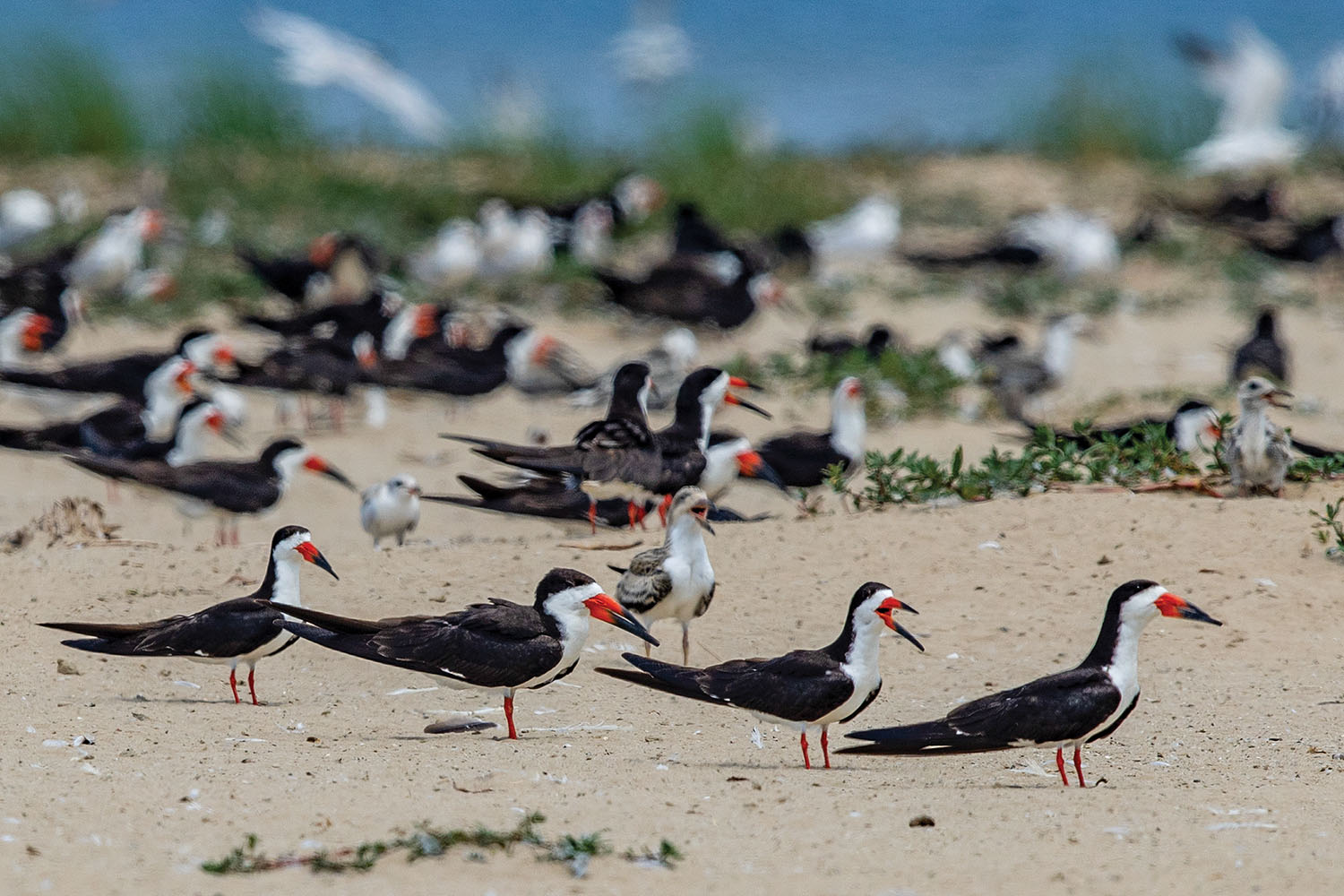A team from the U.S. Army Engineer Research and Development Center (ERDC) has reported that between 2021 and 2023 breeding surveys recorded 160,970 cumulative detections of 74 species of birds inhabiting or visiting the bird islands created in Baptiste Collette Bayou, a channel near Venice, La., that connects the Lower Mississippi River to Breton Sound.
Team members Burton C. Suedel, Jeffrey M. Corbino, Michael P. Guilfoyle and Jacob F. Jung authored a paper on the findings that were presented at the Western Dredging Association (WEDA) annual Dredging Summit and Expo, held in Tampa, Fla., in June.
The surveys confirmed that seabirds are using the islands and wetlands created in Baptiste Collette with dredged sediment for nesting and other purposes year-round. Twelve focal species were identified and were a focus of this research: mottled duck, red knot, marbled godwit, ruddy turnstone, semipalmated sandpiper, western sandpiper, short-billed dowitcher, least tern, and black skimmer.
Presenting on behalf of the authors, Andrew McQueen, a research biologist at ERDC, reported that to date 1,000 acres of coastal habitat have been created by placing unconfined material to raise selected areas to elevations that appeal to a wide range of shore birds, from marsh and shallow water to higher elevations that resist storm damage. The chain of seven islands ranges along the eastern side of the Baptiste Collette channel.
Over the course of the surveys, a decrease in numbers of birds was observed, with 66,521 birds of 56 species reported in 2021; 55,472 birds of 55 species in 2022; and 38,908 birds of 63 species observed in 2023.
“As the islands are vegetated, there is a decrease in individuals using the island,” McQueen said, noting that some key species prefer bare ground for nesting. “We have data to support what we will manage the islands for, including removing vegetation or covering it with new material to appeal to the species we are targeting.”
Gunn Island, completed in 2020, is the most recently created island. By 2022, phragmites, an invasive reed grass, had begun to appear on the island. Plans call for covering the island with maintenance material to preserve the bare nesting habitat.
Covering the plant overgrowth with dredged sediment is an important factor in the success of the islands as native habitat. The other important factor was allowing the sediment to flow outward unconfined, which promotes the creation of broad intertidal flats that provide foraging areas for the birds, said McQueen.
These two methods represent state-of-the-practice and are adaptions made over Baptiste Collette’s lengthy beneficial use history, which began in 1978. The bird nesting islands have been identified as a U.S. Important Bird Area by the National Audubon Society because of the essential habitat they provide to significant numbers of breeding caspian and gull-billed terns and black skimmers, as well as roosting habitat for pelicans.
Next steps for this research include plans to continue seasonal coastal bird monitoring. Near-term plans include additional dredged material placements to create open sandy conditions achieved in 2021 on Gunn Island. Future plans include developing management guidance to promote conservation of regional coastal species of concern along the Gulf Coast consistent with Engineering With Nature practices, McQueen said.




